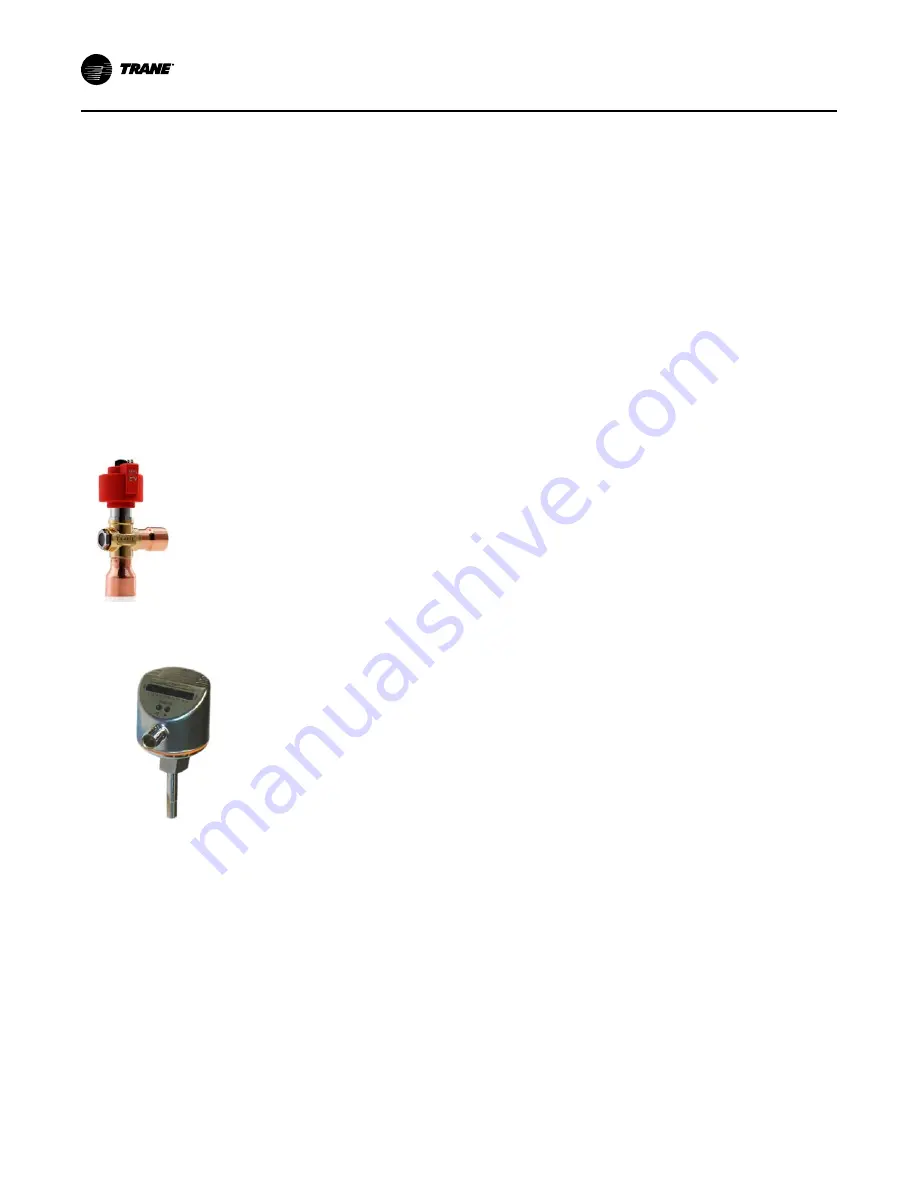
16
ARTC-SVX005B-EN
to each evaporator, condenser and source/sink heat
exchanger inlet.
Isolation Valves
The strainer and flow switch are serviced by manually
closing the isolation valves on each evaporator,
condenser and source/sink heat exchanger branch line.
With these components independently isolated, they
can be removed or replaced as required and the
strainer cleaned without shutting down the fluid flow to
the entire system while the remaining modules to
continue to operate.
Reversing Valve
Each module contains refrigeration valves on each
refrigeration circuit that open and close to allow the
source/sink heat exchanger to operate as an evaporator
or condenser.
Refrigerant Piping
Piping is Type K seamless copper suction line covered
in closed-cell foam insulation, compressor rotalock
service valves, solenoid valves for compressor
pumpdown, and Schrader service valves in the suction,
discharge, and liquid lines.
Fluid Piping
The fluid piping is Schedule 10 steel covered in closed-
cell foam insulation to prevent condensation and retain
heat and cold. Each heat recovery module is connected
to the adjacent module using roll grooved steel
couplings and neoprene gaskets on all joints.
Electronic Expansion
Valve
An expansion valve is a metering device controlling the flow of refrigerant to the
evaporator based on evaporator superheat. The electronic expansion valve is designed
to act as the expansion device for the PolyTherm Chiller/Heater. Incorporated sight glass
monitors movement of the movable element and refrigerant flow inside the system. The
valve is made from modular elements assembled during installation, to simplify
maintenance and inspection of the components.
Flow Switch
A flow switch is wired into the low voltage control circuitry used to detect the flow of
liquid throughout the closed loop piping system. The differential pressure switch
detects water/glycol mixture flow through a pressure differential in the discharge line.
Flow switches are found on all evaporators with isolation valves. Flow switches close
when flow is detected allowing compressors to start. If there is no flow, compressors
cannot operate.
















































